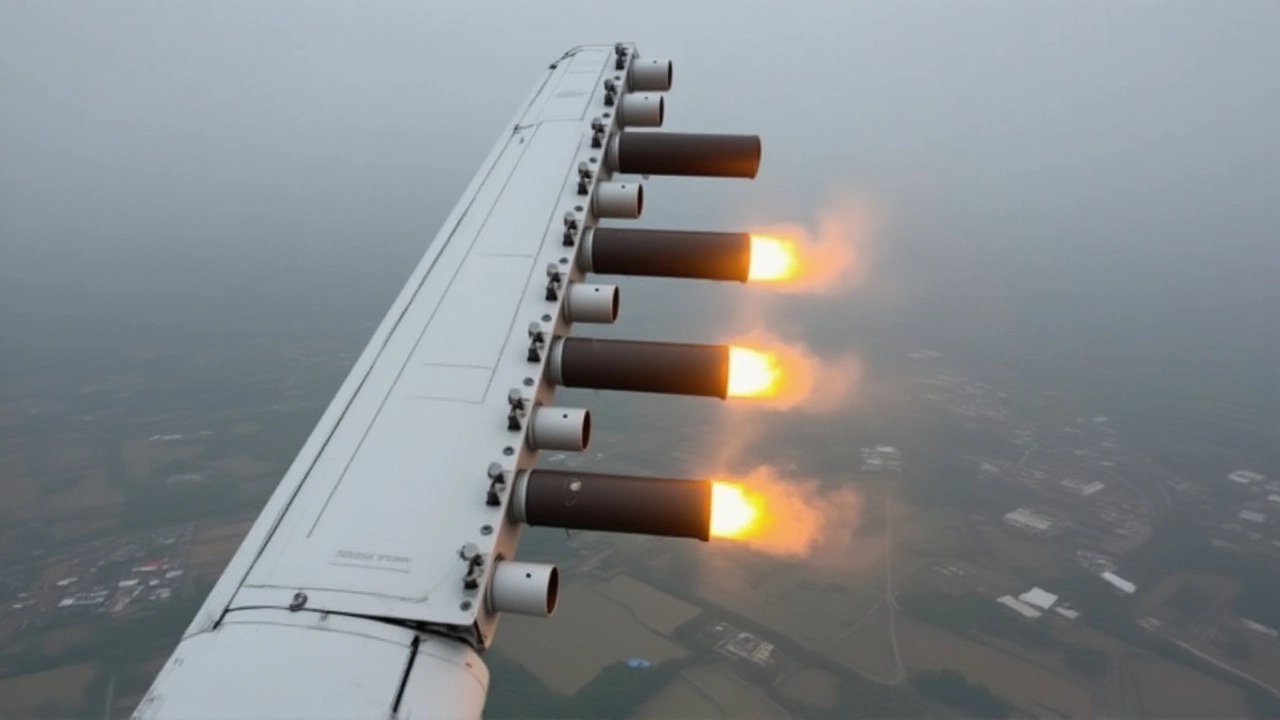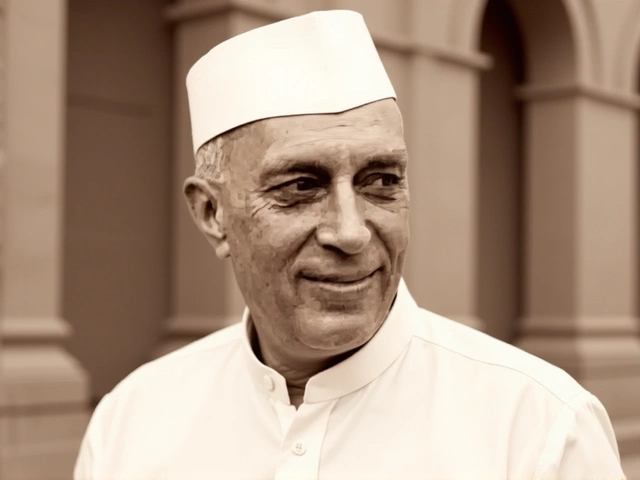When the air in Delhi turned thick enough to choke on, the government didn’t wait for winter to fully arrive—it went to the sky. On October 27, 2025, a small aircraft took off from IIT Kanpur’s campus, loaded with silver iodide and salt compounds, aiming to trigger rain over northwest Delhi. The goal? Wash away the toxic smog that had already pushed the air quality index (AQI) past 300, with PM2.5 levels soaring to 420 micrograms per cubic meter—more than 16 times the World Health Organization’s safe limit. But the clouds weren’t cooperating. Humidity hovered at just 15%, far below the 50% threshold needed. No rain fell. Still, the mission wasn’t a failure. It proved Delhi could act—and now, five more attempts are scheduled as soon as the atmosphere cooperates.
Why Cloud Seeding? A Desperate Gamble
Delhi’s winter air pollution isn’t new. It’s seasonal, predictable, and deadly. Every October, after Diwali fireworks fade and stubble burning begins in Punjab and Haryana, the city becomes a smog bowl. The Delhi Pollution Control Committee (DPCC) has watched PM2.5 levels climb year after year. In 2025, the numbers broke records. Schools shut. Hospitals overflowed. Emergency measures—odd-even traffic rules, construction halts, diesel truck bans—had become routine. But none stopped the invisible killer. Enter cloud seeding. It’s not science fiction. India’s been trying artificial rain since the 1950s, mostly in drought-hit states like Maharashtra and Karnataka. Those efforts boosted rainfall by 14% to 31% in targeted zones. But never before had it been weaponized against air pollution. Now, the Government of the National Capital Territory of Delhi, working with IIT Kanpur, is betting that rain can be summoned to scrub the sky. The project, backed by 23 departments including the Direcorate General of Civil Aviation (DGCA), required aviation clearance to fly at precise altitudes through cloud layers. The DGCA’s involvement wasn’t red tape—it was essential.The First Flight: What Went Wrong
The first test flight targeted Burari, a northern suburb where pollution spikes hardest. The aircraft, operated by IIT Kanpur’s team led by Professor S. N. Tripathi, sprayed silver iodide into the sky. The chemical acts as a nucleus for water droplets to form. But without enough moisture, the droplets never grew heavy enough to fall. The result? Silence. No rain. No visible change. "We didn’t get rain," said Dr. R. S. Mahapatra of the India Meteorological Department (IMD) Pune. "But we confirmed the system works. The plane flew the route. The chemicals dispersed. The sensors logged everything. Now we know what to wait for." And wait they did. Within days, precipitation was recorded in Noida and Greater Noida—areas just outside Delhi’s border. Were these rains caused by the seeding? Environmentalists are skeptical. "Coincidence," said Dr. Anjali Sharma of the Centre for Science and Environment. "The clouds were already forming. Attributing rain to seeding without controlled data is wishful thinking." Still, the Delhi government claims the operation was a success. Chief Minister Arvind Kejriwal called it "a first step toward taking back our sky." He dismissed critics who called it a distraction. "We can’t wait for someone else to fix this," he said. "If rain can clear the air—even for a few hours—we owe it to our children to try."Root Causes vs. Quick Fixes
The real controversy isn’t about whether cloud seeding works—it’s about whether it’s the right priority. IIT Kanpur scientists themselves admit the solution is "highly conditional." Professor Tripathi was blunt: "Artificial rain washes away particles. It doesn’t stop factories from emitting. It doesn’t stop farmers from burning. It doesn’t stop cars from idling." And those sources are massive. Nearly 40% of Delhi’s PM2.5 comes from vehicle emissions. Another 25% from construction dust and industrial activity. Agricultural burning in Punjab and Haryana contributes 15-20%—a point of bitter political blame. The Bharatiya Janata Party (BJP) accuses the Aam Aadmi Party (AAP)-led Punjab government of encouraging stubble burning to harm Delhi. AAP and the Indian National Congress fire back, claiming Delhi is manipulating AQI data by placing water sprinklers near monitors to artificially lower readings. The truth? All sides are partly right. Pollution is a regional crisis. No city can solve it alone. But cloud seeding? It’s a bandage on a broken leg.
What Comes Next? Five More Shots at the Sky
The next cloud seeding attempt is expected within 7 to 10 days, based on seasonal weather models. Meteorologists are watching for cumulonimbus clouds forming over northwest Delhi with humidity above 50%. If they appear, the aircraft will fly again. This time, sensors will track particle reduction in real time. Meanwhile, the Delhi Pollution Control Committee is expanding its monitoring network. New stations are being installed in residential zones, not just near highways. And the government is accelerating plans for electric bus fleets and stricter industrial emission norms—measures that take years, not hours. But for now, Delhi’s sky is still gray. And people are still breathing it in.Historical Context: India’s Long Experiment with Artificial Rain
Cloud seeding isn’t new to India. Tamil Nadu ran trials in the 1980s. Maharashtra’s 2015-2017 program reportedly increased rainfall by 18%. Karnataka’s 2017-2018 effort saw a 31% boost. But those were drought responses—desperate moves to fill reservoirs, not clean air. Delhi’s project is different. It’s the first time artificial rain is being deployed as an air pollution tool. The stakes? Higher. The science? More complex. The margin for error? Slim. "We’re trying to do something no one else has," said Dr. Mahapatra. "That’s why we’re being so cautious. One wrong move, and people lose trust in science."Frequently Asked Questions
How effective is cloud seeding at reducing air pollution?
Cloud seeding can temporarily reduce PM2.5 levels by washing particles out of the air via rainfall—but only if humidity exceeds 50% and suitable clouds are present. Historical data from Maharashtra shows rainfall increases of up to 18%, but Delhi’s 2025 test failed due to only 15% humidity. Even when successful, the effect lasts hours, not days, and doesn’t stop pollution at its source.
Why did the first cloud seeding attempt fail in Delhi?
The October 27, 2025 flight failed because atmospheric humidity was just 15%, far below the 50% minimum required for silver iodide to trigger droplet formation. Without sufficient moisture, the chemicals couldn’t initiate precipitation, despite proper aircraft deployment and chemical dispersion confirmed by IIT Kanpur’s sensors.
Who is responsible for managing Delhi’s air pollution crisis?
Responsibility is shared. The Delhi government manages local emissions, but 40% of pollution comes from vehicles and construction. Another 20% stems from agricultural burning in neighboring Punjab and Haryana—areas under state control. The Central Pollution Control Board sets national standards, but enforcement is fragmented. No single entity can solve it alone.
What are the long-term solutions to Delhi’s air pollution?
Long-term fixes include expanding electric public transport, enforcing industrial emission controls, banning diesel generators, promoting crop residue management in Punjab, and investing in urban green spaces. Cloud seeding offers no lasting benefit. Experts agree that only systemic changes—like shifting to clean energy and redesigning urban mobility—can bring sustained improvement.
Is cloud seeding safe for human health and the environment?
Silver iodide, the chemical used in cloud seeding, is considered low-toxicity in the tiny amounts deployed. The WHO and U.S. EPA state it poses no significant risk at environmental concentrations. However, repeated use over urban areas without long-term monitoring raises concerns about cumulative effects. No studies yet exist on its impact in densely populated cities like Delhi.
Why is IIT Kanpur leading this project instead of a weather agency?
IIT Kanpur has India’s leading atmospheric research group focused on air quality, with specialized aircraft and sensor technology for cloud physics. While the India Meteorological Department provides weather forecasts, IIT-K’s team has direct expertise in pollution modeling and chemical dispersion—making them better suited for this experimental, interdisciplinary task.






